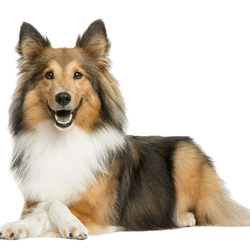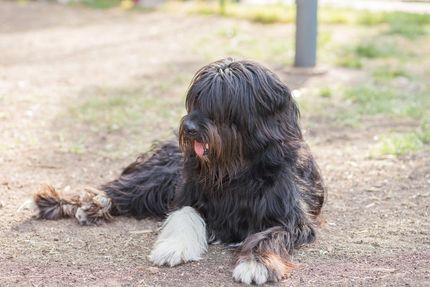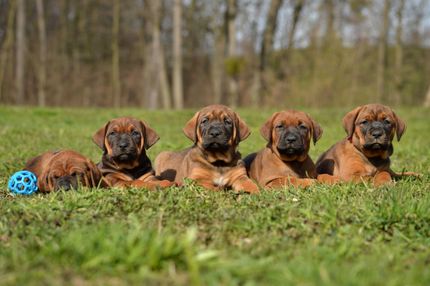Facts & Origin
Silkytie (Shetland Sheepdog and Australian Silky Terrier mix)
The Silkytie is an adorable hybrid dog descended from two remarkable breeds: the Shetland Sheepdog and the Australian Silky Terrier. The Shetland Sheepdog, also known as the Sheltie, originated in the Shetland Islands of Scotland and was primarily used as a herding dog. The Australian Silky Terrier, originally from Australia, was valued as a house dog and rat hunter.
Suitability and attitude
The Silkytie is an excellent choice for families, couples and individuals due to its adaptability and friendly temperament. They do well in an apartment as long as they get regular exercise, and they also thrive in homes with a secure yard where they can run and play. They are active dogs and need daily walks and playtime to keep them physically and mentally healthy.
| Alternate Name | - |
| Origin | Australia - Scotland |
| Life expectancy | 12 - 16 years |
| Care requirements | high-maintenance |
| Activity level | average - high |
| FCI group | not recognised |
| AKC group | not recognised |
| KC group | not recognised |
More Australian Silky Terrier mixes
More Shetland Sheepdog mixes
Attitude, character and temperament of the breed
Possible character traits
The Silkytie is known for its intelligence, energy and friendly nature. They are very people oriented and appreciate the company of their owners. Their intelligence and desire to please make them great candidates for training and obedience exercises. They are usually good with children and other pets, provided they have been well socialized.
The Silkytie is a friendly, active and intelligent dog that is popular with both individuals and families. With proper care and love, this hybrid is sure to make a wonderful pet and loyal companion.
Care and health
Their silky coat requires regular grooming to ensure a healthy and clean appearance. It is recommended to brush their coat several times a week to prevent tangles and matting. As with all dog breeds, it is important to clean their teeth regularly and schedule regular vet visits for prevention and early detection of health problems.
Potential health problems that can occur in the Silkytie breed include those that are common in parent breeds, including hip dysplasia, eye disease, and certain skin problems.
What does this mixed breed look like?
As a mixed breed dog, the Silkytie's appearance can vary , but it is usually a small to medium sized dog. An adult Silkytie can reach a weight of 6 to 14 kg and have a height of 24 to 36 cm. The coat is typically medium to long, silky, and can be a variety of colors, including blue, black, sable, merle, or a combination thereof.
| Fur length | long |
| Fur | flat coated |
| Ear shape | Standing Ears - Tilt-ear |
| Tail | short - fanned out |
| Anatomy | slim, sporty |
| Size ♀ | 23 - 41 cm |
| Weight ♀ | 3 - 12 kg |
| Size ♂ | 23 - 41 cm |
| Weight ♂ | 3 - 12 kg |
| Suitable For | - |
Known Diseases
Cataract
Cataracts are still one of the most common causes of blindness, even in dogs.
Dermatophytosis
Dermatophytosis (synonym dermatophytosis, from ancient Greek τὸ δέρμα derma, German 'skin' and ancient Greek φυτόν phyton, German 'plant') or tinea (Latin for 'woodworm', 'moth') is a skin fungal disease caused by specific fungi (dermatophytes).
Ureteral ectopy
Ureteral ectopy (also known as ureteral ectopia) is an inherited condition where the ureter (known as the ureter) does not end in the bladder as usual due to a misalignment.
MDR1 defect
The MDR1 defect is a defect in the MDR1 gene that can occur in some breeds of dogs and in humans. This results in the deficient or absent synthesis of a certain protein which is an important component of the blood-brain barrier, leading to hypersensitivity to some drugs.
Eye diseases
Often occur with allergies and intolerances.
FAQ
-
This is usually small to medium in size.
-
The Silkytie usually has a long coat.
-
Since this mix has a long coat, it needs regular brushing to avoid matting.
-
The Silkytie is very friendly, amiable and intelligent. He is lively and eager, but also affectionate and playful.
-
The Silkytie needs at least half an hour of exercise per day.




















